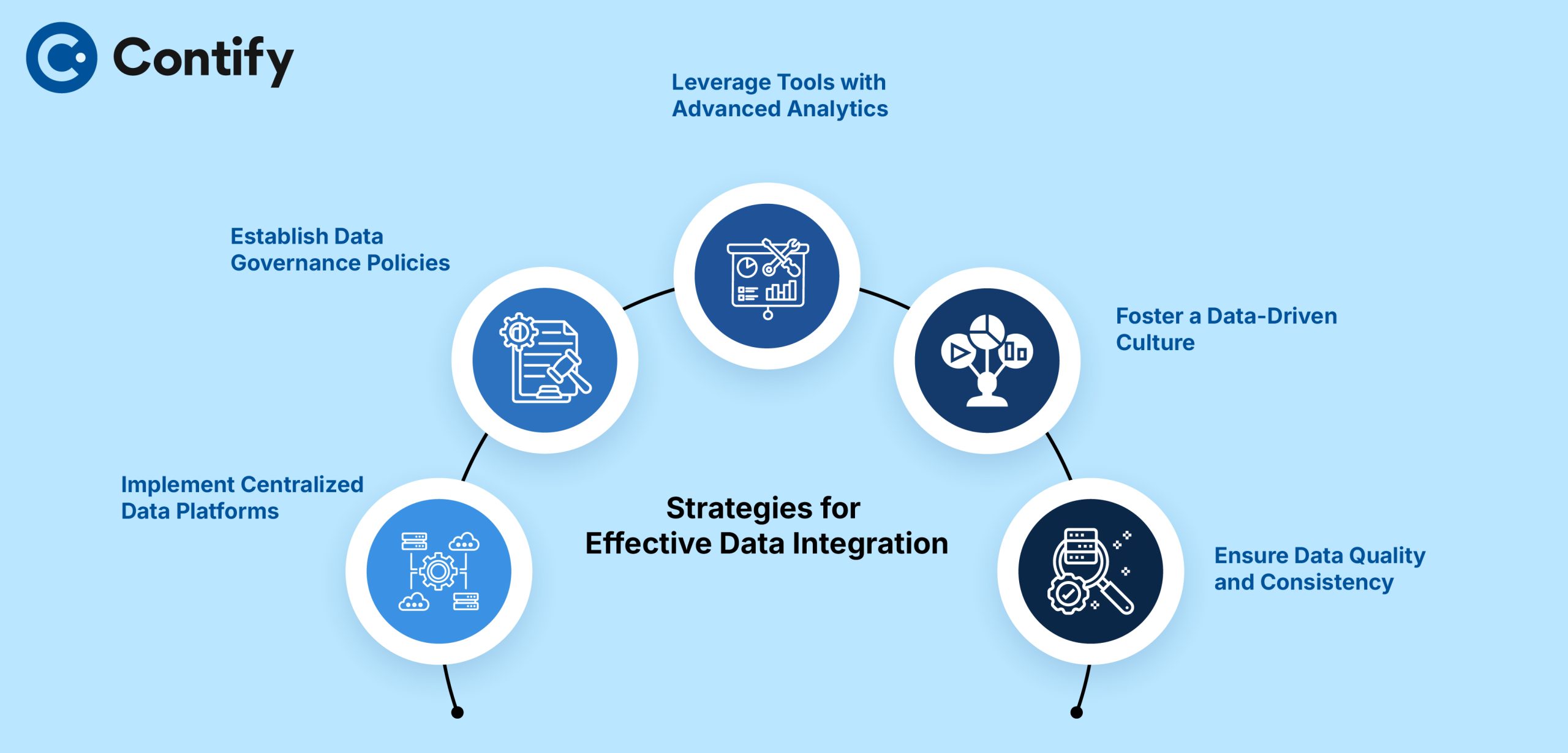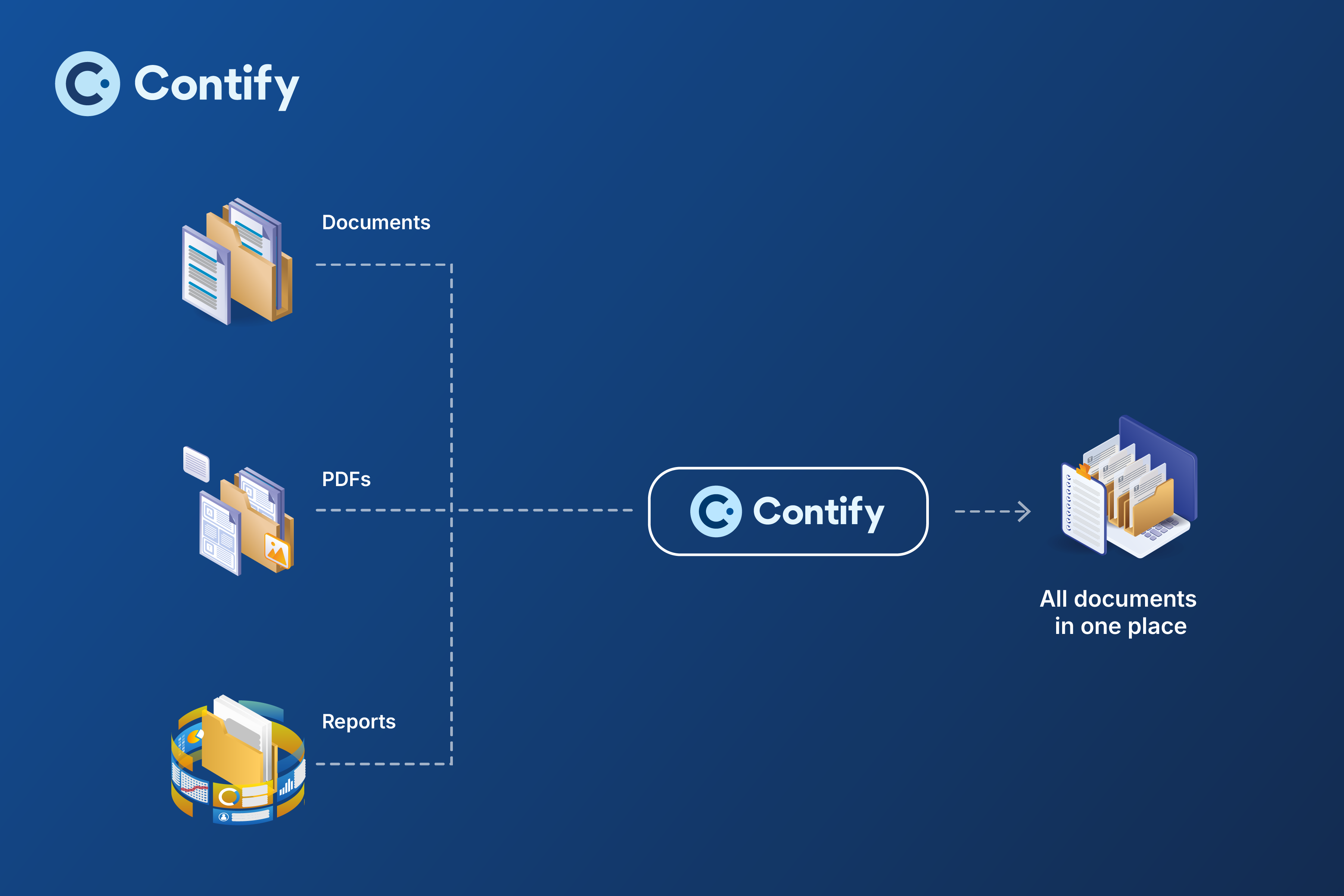Introduction
Reliable data has become the backbone of many organizations in the current business landscape. Be it keeping track of government regulations or the latest social media trends, it all accommodates for piling data scattered within your systems.
The problem stems from the lack of a single repository to store all your internal documents, external research, and paid reports. Integrating these diverse data streams is crucial for making informed, strategic decisions.
This blog explores the importance of unifying internal and external data, the challenges posed by data silos, strategies for effective integration. We will also dive into how leveraging advanced market and competitive intelligence platforms like Contify can help streamline this process by reducing hours of manual searching and enhancing decision-making.
The Challenges of Siloed Data
Data silos occur when information is stored separately within specific departments or systems, interrupting cross-functional access and collaboration. This can lead to several issues:
- Inconsistent Information: Different departments may have conflicting data that often leads to misunderstandings. For instance, the marketing department might have different customer data than the sales team, resulting in misaligned strategies.
- Reduced Efficiency: Time and resources are wasted when employees cannot easily access the information they need. Searching for data across multiple systems can be time-consuming and frustrating.
- Hindered Collaboration: Silos discourage interdepartment collaboration, limiting the organization’s ability to benefit from collective insights. As a result, organizations miss out on many opportunities for synergy.
- Impaired Decision-Making: Without a unified data view, leaders may make decisions based on incomplete or outdated information, potentially leading to strategic missteps.
- Difficulty with Scaling: As companies grow, so does the complexity of their data environment. Without a centralized system, scaling intelligence across global teams and departments becomes increasingly difficult, creating gaps that become increasingly tough to bridge.
Addressing data silos is essential for organizations aiming to enhance their agility and responsiveness in a competitive market. However, the problem lies in integrating this data in a central repository.
Let’s check out a few tips to help you easily access all your data in one place.
Strategies for Effective Data Integration
To successfully unify internal and external data, organizations should consider the following strategies:
- Implement Centralized Data Platforms: Utilize systems that aggregate data from multiple sources into a single repository. This makes it much easier to access and analyze crucial insights when needed. Centralized platforms reduce redundancy by ensuring that all the stakeholders have the same information.
- Establish Data Governance Policies: Data governance policies help preserve data integrity and ensure that only trustworthy sources are being leveraged for decision-making. Ensure clear guidelines for data management to maintain consistency, accuracy, and security across all data sources.
- Leverage Tools with Advanced Analytics: Employ tools that can process and analyze large datasets, extracting meaningful insights from integrated data. Advanced analytics can uncover patterns and trends that might be missed when analyzing data in isolation.
- Foster a Data-Driven Culture: Encourage collaboration and data sharing across departments, promoting a holistic approach to information utilization. A culture that values data-driven decision-making is more likely to invest in the necessary tools and processes for effective data integration.
- Ensure Data Quality and Consistency: Regularly clean and update data to maintain its relevance and reliability. High-quality data is essential for accurate analysis and informed decision-making.
Adopting these strategies can help organizations overcome the challenges associated with data integration and fully capitalize on their data assets.
Benefits of Integrating Internal and External Data
Combining internal and external data streams offers several advantages.

-
- Comprehensive Insights: Integrating internal performance data, such as sales figures or CRM records, with external market intelligence like competitor movements, market shifts, and industry trends helps to gain a holistic market view. For example, a platform like Contify enables competitor benchmarking by correlating your sales growth with competitors’ product launches and market movements. This highlights areas for improvement and helps craft a more strategic and data-driven product roadmap.
- Improved Customer Understanding: When you gather trends and unmet customer needs from external market intelligence and combine them with internal inputs like product performance data and customer feedback, you gain a clear understanding of what customers truly want along with how industry trends have evolved over time.
For instance, analyzing CRM records alongside social media feedback can reveal shifts in customer attitudes. If high-value customers express dissatisfaction with a recent product update on social platforms, the company can proactively address these concerns through targeted marketing campaigns or product adjustments, thereby improving customer satisfaction and loyalty. - Risk Mitigation: Monitoring external market data like economic indicators, regulatory shifts, and market disruptions is essential for proactive risk management. Combining it with internal intelligence such as supply chain performance, customer churn rates, and sales pipeline health provides a holistic view of vulnerabilities. This unified insight helps teams detect early warning signs, anticipate disruptions more accurately, and respond with agility before risks escalate into major threats.
For instance, a manufacturing company tracks rising raw material costs alongside internal supply chain delays, allowing them to secure alternative suppliers early and avoid production disruptions.
- Innovation and Growth: A robust platform like Contify combines internal and external intelligence, enabling businesses to uncover emerging market opportunities and fueling innovation and strategic product development.
For instance, a pharmaceutical company identifies rising demand for personalized healthcare solutions through external market data. By aligning this insight with their internal R&D strengths, they launch innovative, personalized health monitoring devices ahead of competitors.
By breaking down data silos and integrating various data sources, organizations can unlock these benefits and drive more effective decision-making.
Bridging Internal and External Data for Smarter Decisions with Contify
Contify’s Market and Competitive Intelligence (M&CI) platform offers a comprehensive solution for organizations seeking to integrate their internal and external data sources seamlessly.
The market and competitive Intelligence software provides a centralized repository for diverse data streams that enables businesses to gain comprehensive insights and enhance their decision-making processes. Let’s check out a few features that make this process much easier and beneficial.
- Custom Source Addition: Contify provides tailored information gathered from over a million vetted sources. On top of that, users can add their custom sources, such as internal documents, proprietary research, and subscription-based content, ensuring all relevant information is accessible within a single platform.
- Newsletter Sharing: The Contify platform allows you to create personalized newsletters within minutes, using existing templates. You can even share the newsletters with non-users of the platform, which allows you to directly email the relevant stakeholders.
- Seamless Integration with Communication Tools: Contify integrates with multiple channels like Email, Slack, and Microsoft Teams, enabling users to add primary intelligence directly through these channels. It even allows you to share information using these, streamlining the collection of insights from daily communications.
- SharePoint Integration: Contify’s integration with SharePoint allows organizations to connect internal documents with external intelligence, providing a holistic view of information and facilitating seamless access to both internal and external data within a single platform.
- Advanced Filtering and Noise Reduction: Leveraging AI algorithms, Contify filters out irrelevant information, delivering concise and actionable insights tailored to the organization’s specific needs.
- Customizable Taxonomies and Dashboards: You can categorize the information according to your organization’s unique requirements, by using custom taxonomy for enhancing the accessibility and usability of integrated information.
By consolidating internal and external data sources within Contify, organizations can break down data silos, foster collaboration, and make more informed strategic decisions.
Conclusion
In an era where data is a critical asset, unifying internal and external information streams is essential for organizations aiming to maintain a competitive edge.
Addressing the challenges posed by data silos and implementing effective integration strategies can unlock the full potential of an organization’s data assets.
Platforms like Contify offer comprehensive solutions to facilitate this integration, providing businesses with the tools needed to harness data for smarter, more informed decision-making.
Take the next step towards business success today, sign up for our free 7-day trial.




